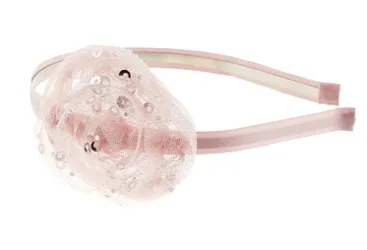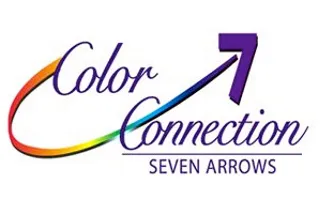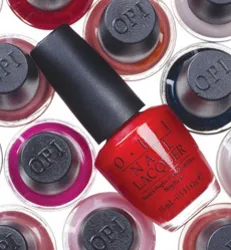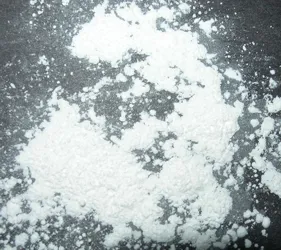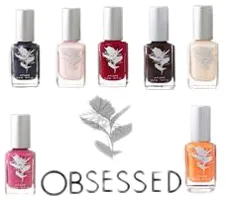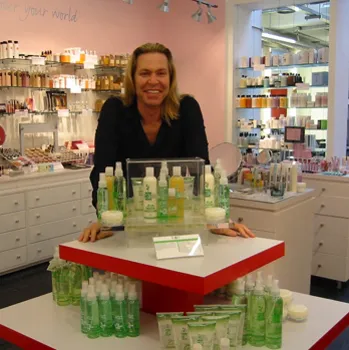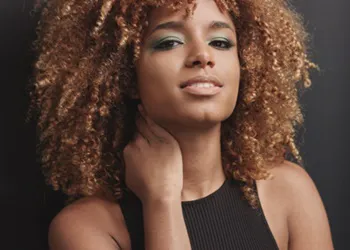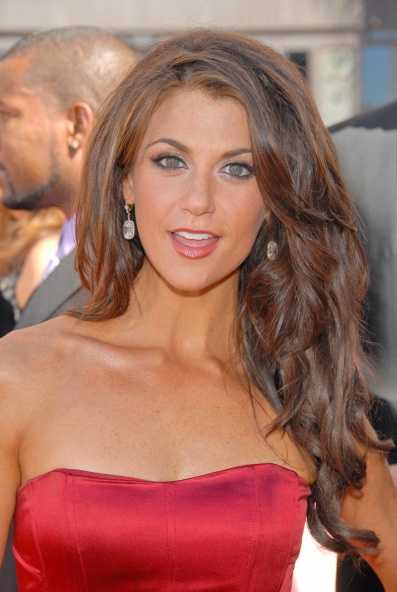
Non-Toxic Hair Color Facts
IntroductionSince the beginning of time people have gone to some extraordinary measures to attain what they perceived to be the standard of beauty for their time. Who hasn't heard of the many beauty routines that Cleopatra endured to be the most beautiful Queen of the Nile? Some of her beauty products were thought to be poisonous, but that didn't stop Cleo from doing whatever it took to be stunning. Unless you happen to be born with it, achieving beauty is rarely easy. This includes achieving gorgeous hair. No matter how much people search for it, there is no quick fix to fabulous hair. It takes time, work and it takes, in many cases, products that contain some form of chemicals. Which brings us to the topic of hair color. The Romans were fascinated with hair dyes and history has uncovered as many as 100 different formulas that were used to alter hair color. Some of the Roman ingredients included everything from leeches and charred eggs to walnut shells. Ironically walnut shells are still used in modern times for some dye formulations. Time has not lessened the power of hair color. Currently Clairol makes more than 70 different shades of just blonde hair colors. These figures are constantly changing according to consumer hair color demands. Why does hair color hold such fascination? Hair color can be that magic wand that instantly transforms dull mousy locks into glorious golden lights that shimmer and shine. It can also instantly erase years of age by covering gray, adding depth to fading colors and cranking up overall shine. Color From Chemical AgentsWhile the end results of gorgeous color seem worth it to many people, there is no easy way to get from dull to dynamite without some form of coloring product. A famous hair colorist once told me that blondes may have more fun but they also have to have more done to their hair to achieve true color nirvana. Depending on what you are trying to accomplish, hair-coloring products will almost always require the use of some form of chemical agents. Why? According to master colorist Theresa Dufour who has represented the Herbavita Corporation in North America for the past 9 years, you have to be able to open the hair cuticle to lighten and deposit color. It's just that simple. If you can't pop open the hair cuticle you will not be able to apply color or make it last. It will wash right out at the next shampoo.
Pick Your PoisonAlthough consumers have historically proven to be allergic to a wide range of ingredients in beauty products, hair color products are considered by many health care experts to pose one of the biggest risks of serious emergency level problems. Although not all experts agree, many believe that a leading cause of hair color allergic reactions are related to PPD which is short for p-Phenylenediamine. Others argue that serious reactions in hair color can be linked to ingredients such as ammonia, peroxide or diaminobenzene. If a hair color product claims that they do not use PPD then they will use something else that can be even more damaging like mercury, lead or other metals. Ms. Dufour reported that consumers often tell her they shun products containing PPD for "safer" alternatives like Loving Care by Clairol. As Theresa pointed out, products without PPD may actually be more dangerous due to the high concentration of metals, leads and mercury. Almost all coloring products that lighten hair contain some amount of hydrogen peroxide. This colorless liquid achieves two major actions. It will first break down the natural melanin in the hair shaft which instantly "lifts" the color of the hair making it lighter. The peroxide also releases oxygen, which combines with the dye molecules and helps them to develop and deposit color. The depositing part is important for covering gray. Although many people worry about the toxicity of using hydrogen peroxide on their hair there are more potentially toxic ingredients, as Ms. Dufour pointed out, that can be lurking in popular hair dyes. Aniline dyes are liquid chemicals that are derived from coal tar and are used in commercial semi-permanent hair dyes. The various aniline dyes are often considered to be toxic and irritating to the eyes, skin and mucous membranes. Hypersensitive people may experience allergic reactions to these dyes. Historically these dyes have also been proven to cause blindness in some cases when used in the eye areas. Ammoniated mercury and related metallic chemicals also provide bleaching agents that encourages color lift. Like PPD and other hair color chemicals, allergic reactions have also been linked to these particular chemicals which may or may not appear in current hair color formulations. How do you know what chemicals are in your hair color brands? Read the labels or ask your colorist to tell you. PPD - Serious Allergic ReactionsFor all your label readers p-Phenylenediamine may also be referred to as phenylenediame, phenylenediame dihydrochloride or benzenediamine dihydrochloride. It is also known by the name aminoaniline dihydrochloride. All of the various PPD derivatives may cause allergic reactions in chemically sensitive individuals. The key word to remember is may. Not all people will react to PPD and even less with have severe reactions. Reported allergic reactions have also included facial and neck swelling. If swallowed it can cause vomiting. The chemical may be toxic if inhaled directly and may cause coughing, sneezing, shortness of breath and in some rare cases, cyanosis (blue lips). In extreme cases respiratory distress has been reported. Although rare, if you or a loved experience these reactions seek medical attention immediately. When PPD makes contact with the skin it may cause rashes and contact dermatitis. Eye contact may cause irritation, redness and pain. Corneal damage and loss of vision has been reported in some very isolated cases. Chronic exposures to PPD may affect kidney or liver function and can cause bluish discoloration of the lips or tongue. To Color Or Not To Color?Does all this scary information about hair color chemicals mean that you shouldn't color your hair? Not exactly. With everything in life there are tradeoffs. A lot of foods that we enjoy contain chemicals that may have toxic implications. Does that mean we should give up our favorite foods? Probably not. However, it is important to be aware of potential risks with any life decisions we make whether it means coloring our hair or drinking diet colas. The other noteworthy point is that knowledge if power. If you know after reading the labels that you might be allergic to some of the chemicals in hair coloring products, take preventive measures. Some of the options you have include performing patch tests for any product that is suspect, selecting products that have the least amount of chemicals that you could react to and discussing risks with your physician. Patch Tests: Your Best ProtectionWho should perform a patch test? Everyone! As Ms. Dufour pointed out, it is hard to predict what ingredients may cause allergic reactions. While her company's semi-permanent color product, Herbatint, does contain a very small amount of PPD (when compared to other products), it also contains other natural coloring agents like walnut, rhubarb and cinchona extracts. As Theresa pointed out, people can be allergic to a wide range of ingredients from more natural ones like walnut to the chemical additives. You just never know what one person will react to that will be fine for the majority of others. Although allergies do happen, according to Theresa, are actually very rare. Even more interesting is that some consumers can use Herbatint or other coloring products for an extended period of time with no problems may suddenly experience a reaction with no prior warning. To be safe, Theresa advises that a patch test should be performed before every single hair color application with either the Herbatint or Vegetal Color products. No matter how many times you have used the product successfully in the past you just never know when problems can develop. How To Perform A Patch TestIf you have never done a patch test before it is relatively simple to do and will provide you with peace of mind that your body can handle the product ingredients with no problem. Theresa recommends that both men and women apply a little bit of the product to the inside of the elbow and then leave the mixture uncovered for a minimum of 24 hours. People who are aware of prior chemical sensitivities should do a patch test for 48 hours. I If you will have a hard time keeping the product uncovered, you also have the option of doing a patch test behind the ear. The key to doing a good test is to leave the product uncovered. Remember, when in doubt always discuss the issues of using chemical products with your personal physician and get their advice. Herbavita - Mild Coloring AgentsHerbavita is one of the original European manufacturers of "all natural" and "non-toxic hair colors". With thirty years on the market Herbavita is also the oldest of the natural coloring manufacturing companies. Based in Rome, Italy, Herbavita currently sells their products in 26 different countries around the world. They have worked hard to create products that are as safe as possible for hair consumers. Understanding that many consumers want low chemical based products as options, Herbavita created two different products to choose from. Herbavita specializes in products designed around herbal ingredients and sells two popular lines of "natural hair color". These include:
The Herbatint Semi-Permanent Hair Color will last approximately 4-5 weeks before new growth is apparent. The color may also fade over time. Vegetal Colors will last through 6-8 shampoos depending on the frequencies of shampoo. Herbavita also makes beautiful shampoo under the label of Royal Cream. They are more than a shampoo. They provide moisturizing and conditioning benefits. Honesty Is The Best PolicyAs Theresa Dufour explained to me, Herbavita believes that honesty is the best policy for all the hair care consumers that they serve. Not only will they tell you to be careful and informed about your own possible product sensitivities, they will tell you that while it is rare, people may have reactions. To demonstrate Herbavita's concern for educating the consumer about possible reactions, Theresa faxed me a detailed and complete list of all the ingredients that are used in both the Herbatint and the Vegetal Colors. The list also included the concentration levels of each ingredient utilized by the products. Yes, it is true that Herbatint contains a small amount of PPD (.08 to 1.22%) in the form of Phenylenediamine. Depending on the color selected the amount of PPD can be as low as .08%. This is significantly less than the commercial hair color lines that might contains as much as 6% PPD. The European Community currently approves up to 6% of PPD for hair coloring products. Consumers concerned about peroxide will be happy to learn that Herbatint contains the least amount of peroxide necessary to open the hair cuticle. Depending on the Herbatint shade selected, hydrogen peroxide levels will range from a very low 3-10% volume compared to commercial color products that will contain anywhere from 20, 30 or 40% volume levels. The product is completely free of ammonia, which is a known culprit in inhalation and odor concerns. Herbavita makes a point of limiting the types and concentrations of chemicals in their Herbatint line as much as possible. Depending on the hue selected Herbatint may also contain nonoxynol-6, nonosynol-4, ethanolzmine, propylene glycol, EDTA, sodium, Metabisulfite, walnut extract, rhubarb extract, cinchona extract, Resorcinol, O-aminophenol and M-aminophenol. As always, Herbavita tries to limit the concentrations of any of the chemicals that they do include in their products. Safety FactorsHerbatint is considered safe for use by pregnant women because it is free of harmful fumes or odors. Most people are under the misconception that the problem with coloring hair during pregnancy is the penetration of the color product into the scalp or the skin. The truth of the matter is that the danger comes from inhaling the toxic hair coloring fumes. Jane Leeves of TV's Frasier reported that she used Herbatint to color her hair during her recent pregnancy with no side effects. Many doctors and nurses also recommend the product as safer then commercial color brands. Theresa reported that Herbatint may be safe for cancer survivors with the specific approval of their physicians. Theresa is herself a 10 year survivor of lung cancer. She has been personally using the Herbatint product on her own hair for the past 9 years without any harmful side effects. She also told me that many of her long time highly sensitive and allergic prone customers have used Herbatint without any problems. Not only has Herbatint been featured in wellness magazines like Natural Health Magazine, it has also been featured in high fashion tomes like InStyle magazine. Honesty is their claim to fame. They are the first to try and educate consumers on the risks of certain chemicals and the benefits of natural hair coloring products. Herbavita does not want to harm people with their products. They want to educate them about the options that they offer for coloring hair the safest way possible. I personally believe that they do an admirable job of helping consumers understand the various hair coloring requirements and risks. Color Your WorldThe same is true with the "natural" color line from Herbavita. Although the Herbatint line is a semi-permanent coloring product that will lift color 1-2 levels and will deposit pigment, it will not help a dark haired brunette become a platinum blonde. As Theresa explained, it just can't happen with such a mild color agent as Herbatint. She wants that information to be clear so there is no doubt on the part of the consumer. Theresa reminded me during our long conversation that consumers can't have it both ways. A coloring product that is as natural and mild as possible just won't have the lightening and coloring powers like the chemical big boys. Herbatint will lighten color as much as two shades, will cover gray and will deposit color. The product will not allow you to go lighter than two levels of color. The very low levels of PPD and peroxide make it impossible for the product to produce more dramatic results. Remember, if your hair is already light, you can go lighter. However, brunettes will not see more than a two shade lightening difference. Hues To Choose FromThe Natural Personal Care Site on the Net contains a Herbatint color chart page with enlargeable colors for better viewing. Remember that computer generated colors might display a little differently on the screen than they will on your hair and can vary slightly from actual colors. For a color chart, you can write to The Natural Personal care site for a real color chart. Herbatint is distributed exclusively in the United States by Nature's Answer, Inc., 320 Oser Avenue, Hauppage, NY 11788 and is sold in larger health food stores such as Whole Foods and Wild Oats. For more information about the products or for a list of locations where to buy the product call toll free at 888-856-8888. Herbatint Vegetal ColorHerbavita's Vegetal Color is a demi-permanent herbal colorant, which is "all natural" and free of any ammonia, peroxide or diaminobenzene. It will not lift, lighten color or cover gray because it does not contain peroxide which is an absolute must for lifting color. It does contain other ingredients that may trigger allergies in some people. The Vegetal Color product will make hair look shiny, healthy and give it a beautiful hue. Yes, Vegetal Color is a good "more natural" product that is rich in conditioning properties. It is also adequate for helping to blend gray into your natural hair color. Vegetal will wash out after several shampoos, hence the term "demi-permanent". The Herbavita Vegetal Color range includes 13 different shades that are designed to blend your current colors rather than add lightening or other dramatic results. Remember that Herbavita Vegetal Color does not contain peroxide, bleach or other chemical properties required to remove or lift color from your pigment. The Vegetal Colors come in 2 ounce containers and include the following current shades: Black, Chestnut, Blonde, Honey Blonde, Golden Chestnut, Golden Blonde, Mahogany Chestnut, Mahogany Blonde, Copper Chestnut, Copper Blonde, Ash Chestnut, Ash Blonde, Henna Red. SummaryIf you have a history of experiencing sensitivities to hair color formulas you will need to check with your primary health care consultant before using Herbatint, Vegetal Colors or similar "natural color" products. Although the majority of people may handle the Herbatint Vegetal Colors with minimal or no problems, there is always the exception to the rule. If you have a known problem with PPD you should definitely get a seal of approval from your doctor before considering using a product that contains your known allergen. Herbatint IngredientsTheresa Dufour graciously offered to fax me Information on all of the Herbatint Ingredients for this article. Theresa was insistent that I have this information to share with consumers for their own education and awareness. The following information was taking directly from the Herbatint Ingredient sheet so graciously provided by Theresa. Walnut Extract - Natural extract from walnuts. Traditionally used topically for its soothing and anti-itch properties as well as against sunburns and other superficial burns. It can be used in cases of acne and skin disease because of its fungistastic and stringent properties. Though extracts are obtained from the leaves and bark, the oil is extracted from the ripe nut. Rhubarb Extract - Natural extract from Chinese rhubarb. Calms scalp irritation and provides yellow coloring for hair. Cinchona Extract - Natural Extract from Cinchona bark. A major source of quinine. Cinchona extract has long been known for it tonic, antiseptic and astringent properties. It has been commonly used as a remedy for malaria and fever in tropical areas. If used in large quantities cinchona may cause headaches and nausea in those allergic to it. Propylene Glycol - Organic extract. Next to water, this is the most common moisture-carrying vehicle used in cosmetic formulations. It has better skin permeation than glycerin, and it also gives a pleasant feel with less greasiness than glycerin. Proplylene glycol is used as a humectant since it absorbs water from the air. It also serves as a solvent for antioxidants and preservatives. In addition, it has preservative properties against bacteria and fungi when used in concentrations of 15% or higher. There is a concern that propylene glycol is an irritant at higher concentrations, though it appears to be quite safe at usage levels under 5%. Noxinol 6/4 - Organic extract. An emulsifier. P-Phenylenadiamine - From 0-8 to 1.2 % depending on the shade. Chemical. Provides coloring for hair. Rescorcinol - Chemical. In very mild solutions it is used as an antiseptic and as a soothing preparation for itchy skin. In slightly higher concentrations it removes the surface layer of skin (the dry dead cells) and it is used in lotions for irritated skin and particularly in connection with acne. In still higher concentrations it can act as an aggressive surface skin exfoliate. Resorcinol can also be used as a preservative. While it is beneficial skin care ingredient, when used in low concentration, it causes irritation in higher concentrations, with a strong burning sensation and a reddening of the skin. Used in high concentrations as a peel, resorcinol may cause a variety of problems. Resorcinol is obtained for various resins. Sodium Metabisulfite - Organic Extract. An inorganic salt used as an antiseptic and a pH adjuster in cosmetic creams. Concentrated solutions can cause strong irritations. O/M Aminophenol - Organic Extract. Coloring for hair. EDTA - Organic Extract (ethylendiamine tetra acetic acid) a preservative. Ethanolamine - Organic Extract (not of animal original). An emollient. Etidronic Acid - Organic Extract A stabilizer. Glycol - Organic. An emollient Hydrogen Peroxide - Chemical A bleaching and oxidizing agent. Detergent and antiseptic. Generally recognized as a safe preservative, germ killer, and skin bleacher in cosmetics. If used undiluted, it can cause burns of the skin and mucous membranes. Water - Water is an important skin component and is essential for its proper functioning. It is the most common ingredient used in cosmetic formulations and therefore is generally listed first on product labels. Warning: Do not use Herbatint for eyebrows, eyelashes, beard or mustache due to direct contain with the skin which can be cause for a higher allergic reaction potential. |
| If you want to talk more about this or other hair care articles on HairBoutique.com or anywhere else, please post a message on HairBoutique.com's Hair Talk Forums.
|
Social Media Network Information
Please follow us on Twitter at: https://Twitter.com/HairBoutique. I look forward to meeting new people from all walks of Twitter and learning from their Tweets.


